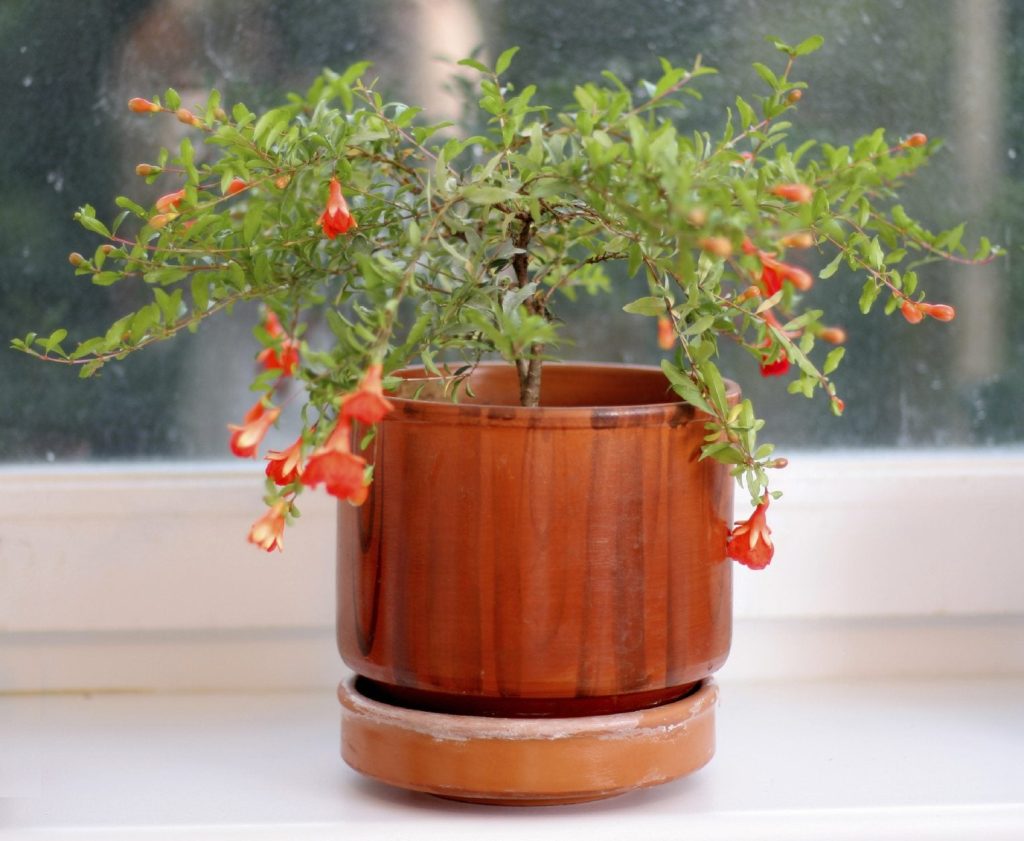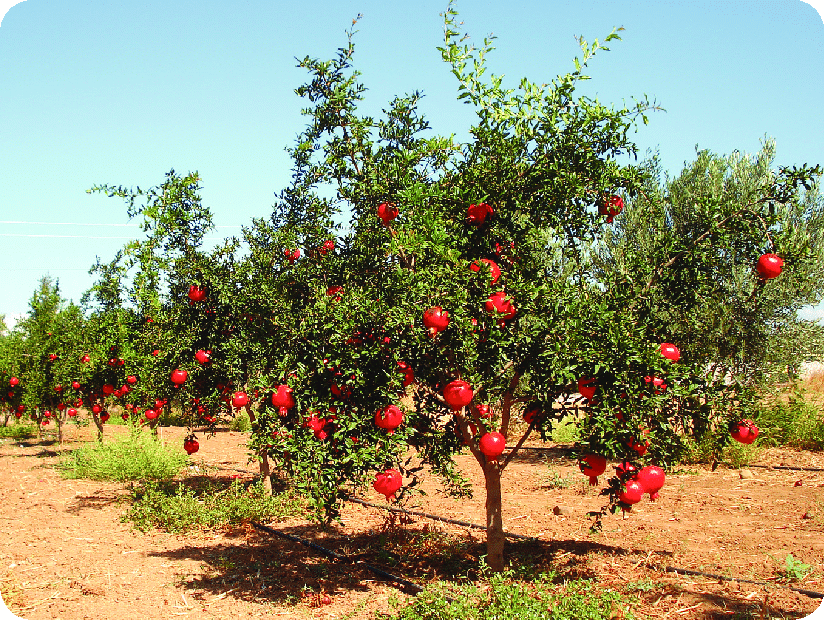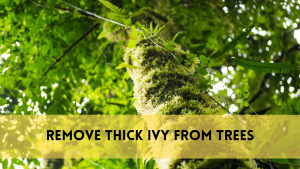Pomegranate trees, with their lush foliage and enticing fruit, have enthralled arborists and enthusiasts for decades. These deciduous shrubs from the Lythraceae family are both decorative and edible. In this detailed guide designed for arborists in Kingwood, we’ll discover the secrets of where pomegranate trees grow. We’ll go deeply into the complexities of producing these unique trees, from their botanical profile to their ideal climate and soil requirements. With insights into geographic distribution and optimal places for arborists, we’ll provide you with the knowledge you need to cultivate successful pomegranate orchards in Kingwood. Whether you’re an experienced arborist or a beginner, this guide promises to unlock the mysteries of pomegranate tree cultivation by providing practical suggestions and expert advice to help you succeed in your horticultural endeavours.
Where do pomegranate trees grow?
Understanding Pomegranate Trees
Pomegranate trees, scientifically known as Punica granatum, are stunning additions to any environment. These deciduous shrubs or small trees have a variety of distinguishing traits that make them both physically beautiful and commercially important. Pomegranate trees, with their glossy, narrow leaves and vivid, funnel-shaped blooms, lend an elegant touch to gardens and orchards alike. Aside from their aesthetic appeal, these trees are treasured for their tasty and healthy fruit, known as pomegranates. The pomegranate fruit is distinguished by its leathery exterior and abundance of jewel-like arils, each overflowing with sweet-tart juice. Pomegranate trees, which are grown in many parts of the world, are extremely adaptable to varied temperatures and soil types. Pomegranate trees have left an indelible influence on horticulture and culinary traditions around the world, from their natural habitats in Iran and India to their extensive cultivation in the Mediterranean and subtropical regions. Understanding the botanical profile and distinguishing features of pomegranate trees is critical for their effective cultivation and appreciation.
Climate and Soil Requirements
Pomegranate trees require precise temperature and soil conditions for best development and fruit production. These trees flourish in subtropical and Mediterranean climates, particularly in areas with hot, dry summers and moderate winters. They can withstand temperatures as low as 10°F (-12°C), but continuous freezing can harm them.

Pomegranate trees prefer well-drained, somewhat fertile soil. Sandy loam or loamy soils are suitable for proper water drainage and root aeration. Avoid soggy or heavy clay soils, as they can cause root rot and other problems.
Pomegranate trees prefer well-drained, somewhat fertile soil. Sandy loam or loamy soils are suitable for proper water drainage and root aeration. Avoid soggy or heavy clay soils, as they can cause root rot and other problems.
Furthermore, pomegranate trees grow on soils with a pH of 5.5 to 7.0. Soil pH values that fall outside of this range can have an impact on nutrient availability and tree health. Arborists can ensure robust development and copious fruit production in their pomegranate orchards by creating the ideal climatic and soil conditions.
Geographic Distribution
Pomegranate trees have a long history of regional dispersion, originating in Iran, Afghanistan, and northern India. For thousands of years, these locations served as native habitats where pomegranates thrived naturally. Pomegranate cultivation extended around the world over time, thanks to trade, discovery, and migration.
Pomegranate farming is now common in places with Mediterranean and subtropical climates such as Spain, Turkey, Israel, and parts of the US. These trees have adapted well to a variety of temperatures and soil conditions, prospering in both desert and humid areas.
Pomegranate production has expanded globally, resulting in the introduction of several cultivars and types, each with their own distinct characteristics and flavours. Pomegranate trees have become a vital component of agricultural landscapes all across the world, from the dry landscapes of the Middle East to California’s fertile plains.
Arborists in diverse places are continuing to investigate the potential of pomegranate production, utilizing their adaptation and durability to enrich local agriculture and improve culinary experiences. Pomegranate trees are widely distributed, highlighting their lasting popularity and value.
Suitable Locations for Arborists
Arborists looking for ideal areas to plant pomegranate trees will find the Kingwood region to be especially favourable. Kingwood, which is located in a subtropical climate zone, has hot, humid summers and moderate winters, similar to pomegranate trees’ natural environment.

Pomegranate trees flourish in such environments, where they get enough of sunlight and warmth throughout the growth season. Furthermore, Kingwood’s sandy loam soils have good drainage, which prevents waterlogging and ensures healthy root growth. Furthermore, pomegranate trees are highly adaptable to a variety of soil types and environmental circumstances, making them ideal for cultivation in the Kingwood setting. Arborists can take use of the region’s favourable temperature and soil features to build productive pomegranate orchards that provide plentiful harvests of exquisite fruit year after year.
With proper care and management, pomegranate trees in Kingwood may thrive, providing arborists and aficionados with both visual beauty and culinary delight.
Planting and Care Tips
Pomegranate trees in Kingwood require careful planting and care to preserve their health and output.
When planting, choose a sunny spot with well-drained sandy loam soil. Dig a hole twice the size of the tree’s root ball and mix organic debris into it to increase fertility and drainage. Plant the tree at the same depth it was in the nursery container, and properly water it.
Water newly planted trees on a regular basis during the growing season to help them build root systems. Once established, water deeply but infrequently, leaving the soil to dry in between waterings to avoid waterlogging.
Pruning is necessary for maintaining tree shape and increasing fruit yield. Prune annually during the dormant season to eliminate dead or diseased.
Monitor trees on a regular basis for signs of pests or diseases, such as aphids or fungal infections, and treat them as soon as possible with appropriate measures.
Arborists can assure the health and productivity of pomegranate trees in Kingwood’s environment by following these planting and care instructions, which will provide both beauty and plenty for years.
Related Posts:
Harvesting and Maintenance
Harvesting and maintaining pomegranate trees in Kingwood is critical to ensuring a plentiful crop and healthy tree growth.
Pomegranate fruit normally ripens between late summer and early fall, depending on the type. Harvest the fruit when it is fully coloured and produces a metallic sound when tapped. Cut the fruit from the tree with pruning shears, taking care not to injure the branches.
Fertilize trees sparingly in early spring with a balanced fertilizer to support healthy growth and fruit output. Apply a layer of mulch around the tree’s base to keep moisture in and weeds out.
Regularly inspect trees for symptoms of stress, nutrient deficits, or pest infestations. Prune annually during the dormant season to eliminate dead or diseased branches and improve airflow through the canopy.
Arborists can enjoy a large crop of delectable pomegranates while also ensuring the long-term health and vitality of their Kingwood trees.
FAQS
Can pomegranate trees grow in colder climates?
Pomegranate trees are relatively resilient and can withstand temperatures as low as 10°F (-12°C). However, persistent freezes can harm the trees, therefore, it is critical to protect them during severe cold spells.
How long does it take for a pomegranate tree to produce fruit?
Pomegranate trees normally provide fruit within 2 to 3 years of establishment. However, the actual time of fruiting may differ depending on tree age, species, and growth conditions
Do pomegranate plants demand a large amount of water?
Once established, pomegranate trees are drought-tolerant, but they need to be watered on a regular basis, especially during droughts or hot weather. Deep, infrequent watering is better to regular, shallow irrigation.
Are pomegranate plants prone to any diseases?
Pomegranate trees are subject to a variety of diseases, including fungal infections like powdery mildew and bacterial blight. Proper maintenance, such as proper sanitation and trimming, can assist to prevent disease outbreaks.
What are the best trimming techniques for pomegranate trees?
The best time to prune pomegranate trees is during their dormant season, which is usually late winter or early spring. Remove dead or diseased branches, thin off dense growth, and shape the tree to maximize airflow and sunshine penetration.
Conclusion
To summarize, pomegranate trees provide a satisfying experience for arborists in Kingwood and beyond by combining aesthetic beauty with culinary delights. Understanding their botanical profile, temperature and soil requirements, and ideal cultivation sites is critical for success. Arborists may promote healthy and productive trees by following planting and care guidelines such as regular watering, trimming, and insect management. Harvesting ripe pomegranates and caring for trees year-round assures a plentiful yield and long-term tree health. Pomegranate trees have problems such as freezing temperatures and disease susceptibility, but appropriate care and attention can help to alleviate these issues. As arborists continue to investigate the potential of pomegranate growth, they add to the rich fabric of horticultural and culinary traditions. With devotion and understanding, pomegranate trees may thrive in Kingwood’s landscape, offering both beauty and sustenance for future generations.
How useful was this post?
Click on a star to rate it!
Average rating 0 / 5. Vote count: 0
No votes so far! Be the first to rate this post.




